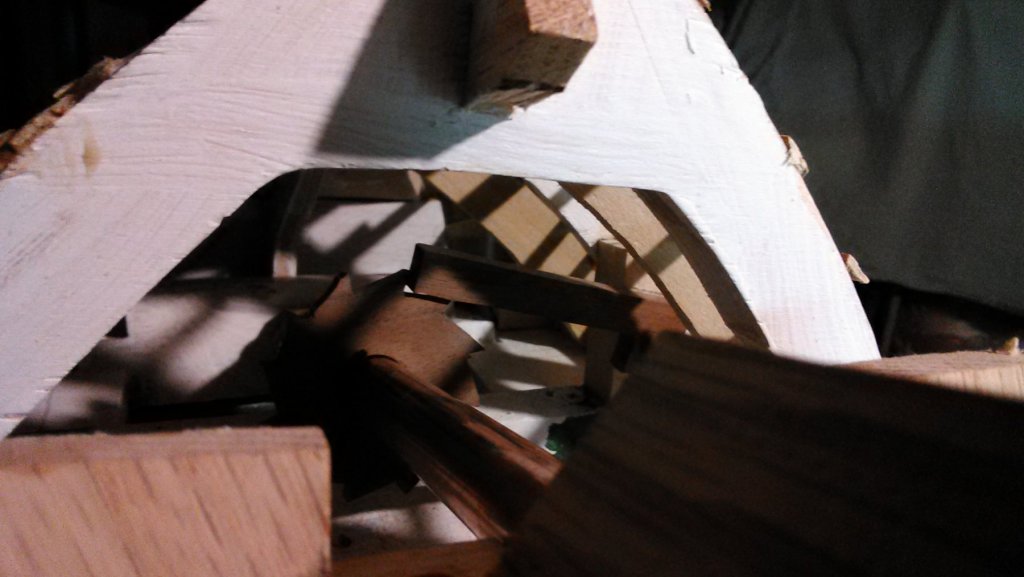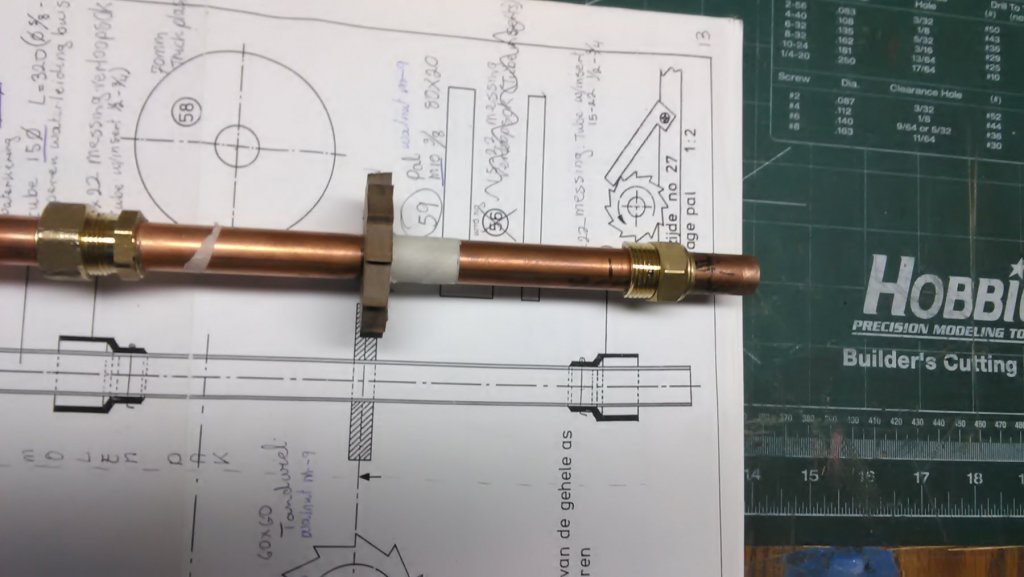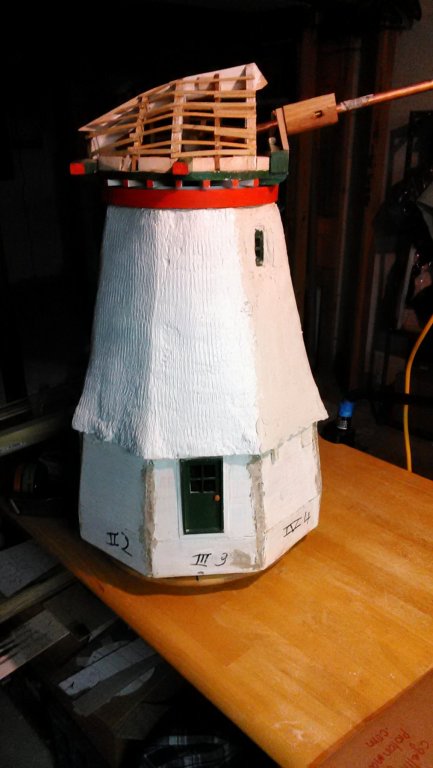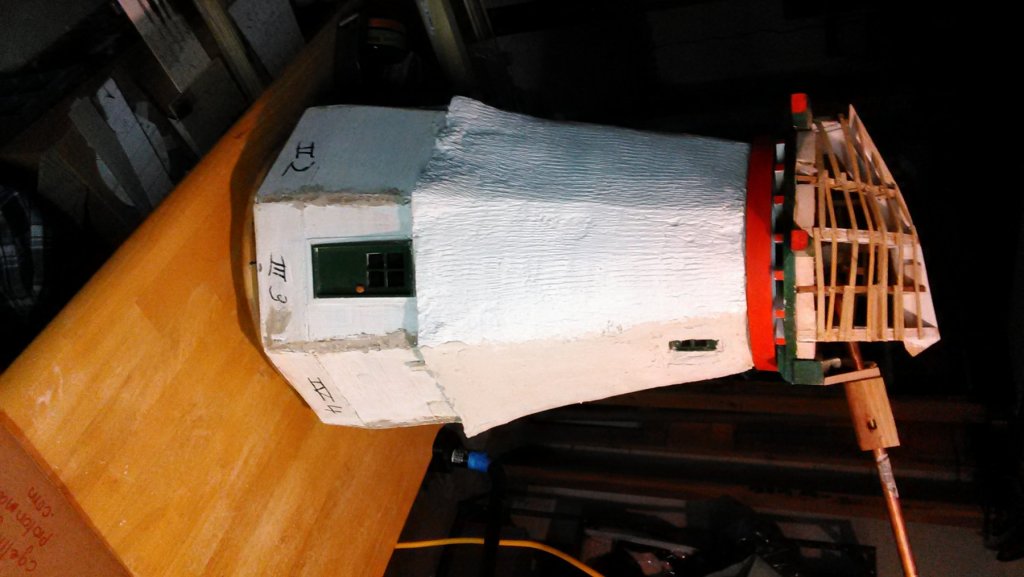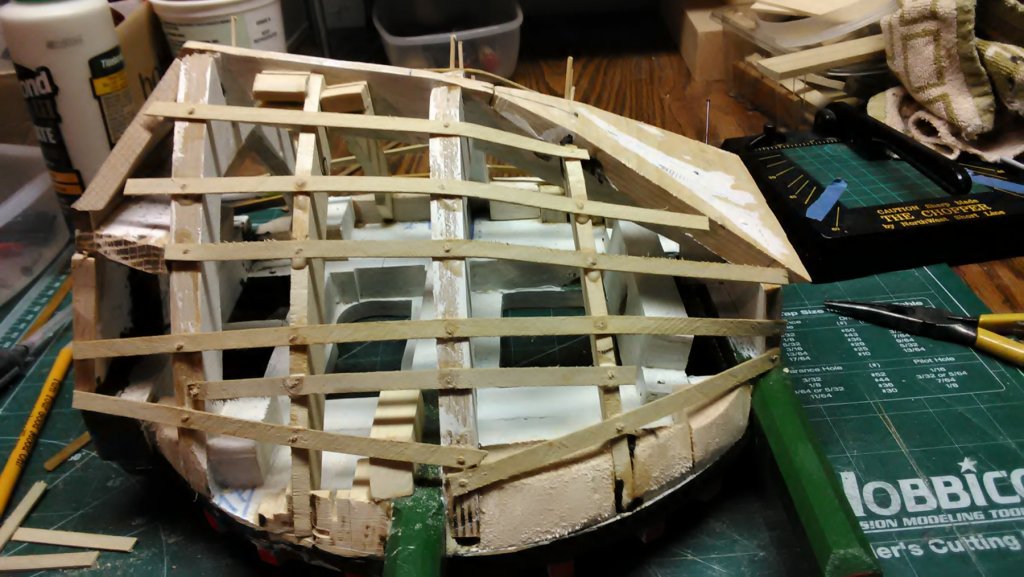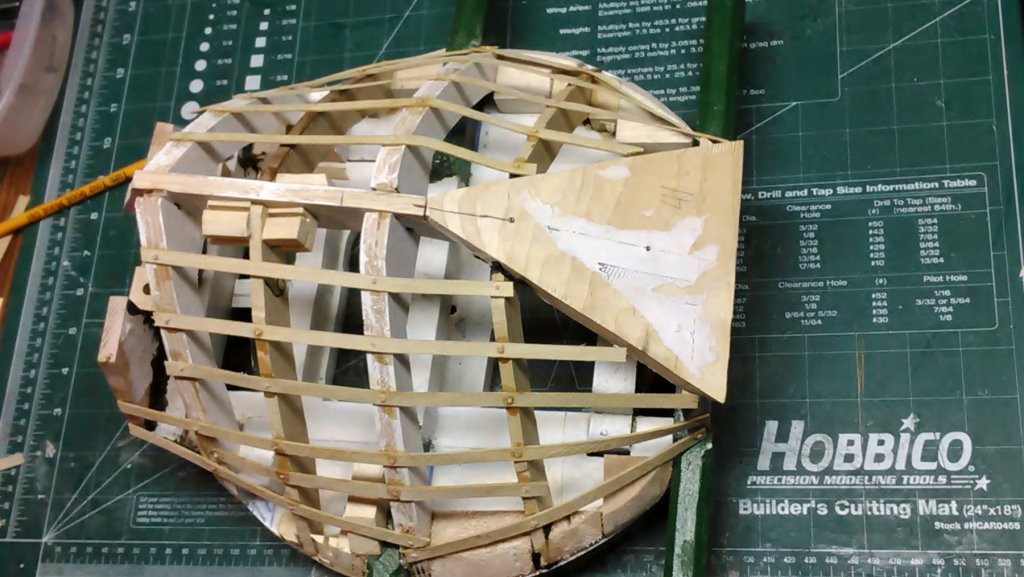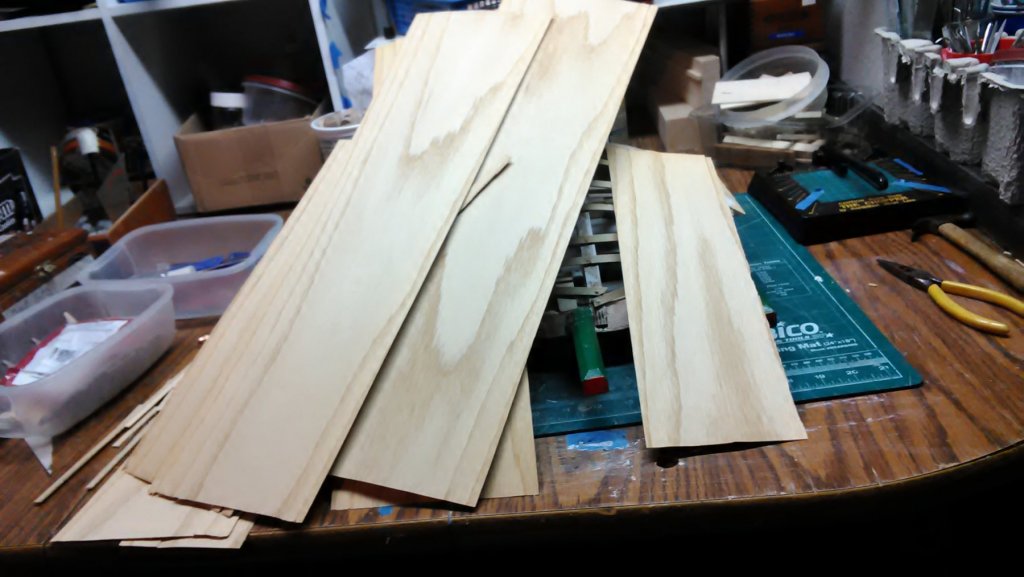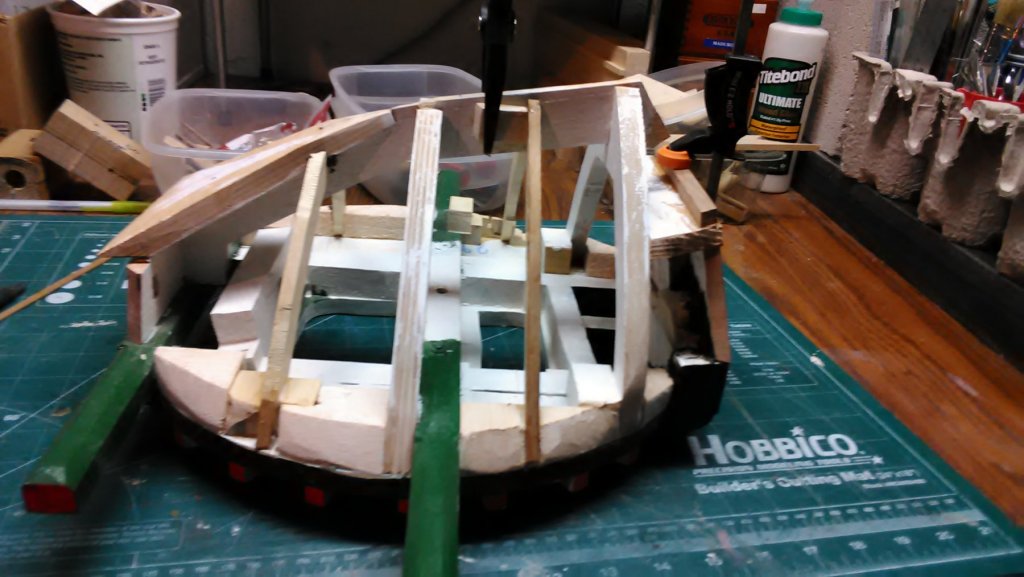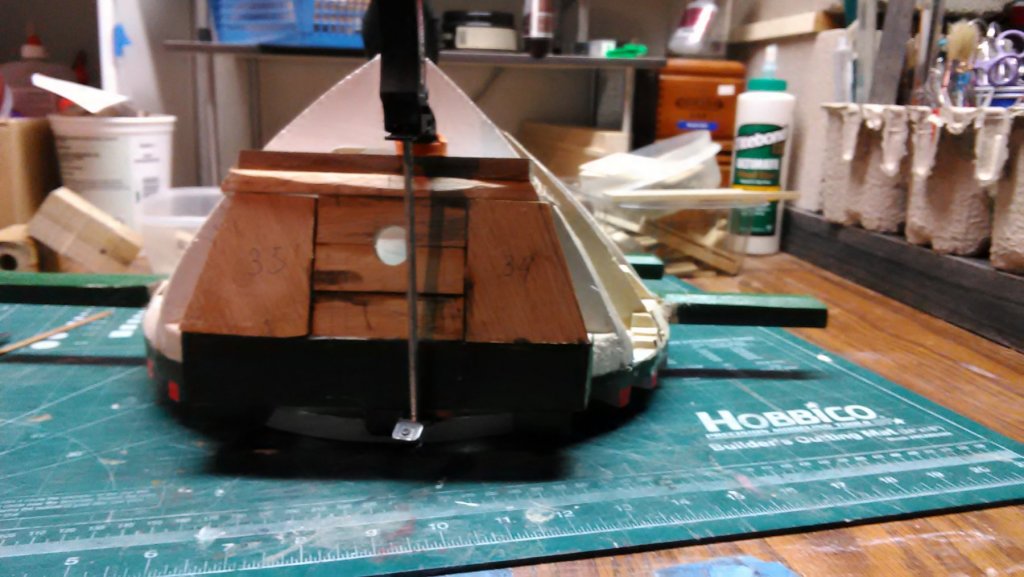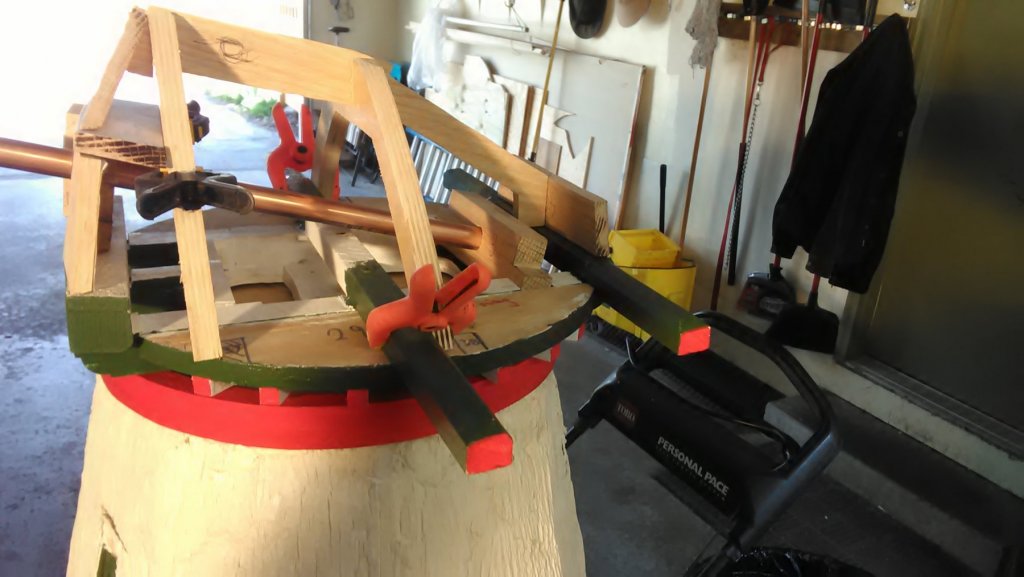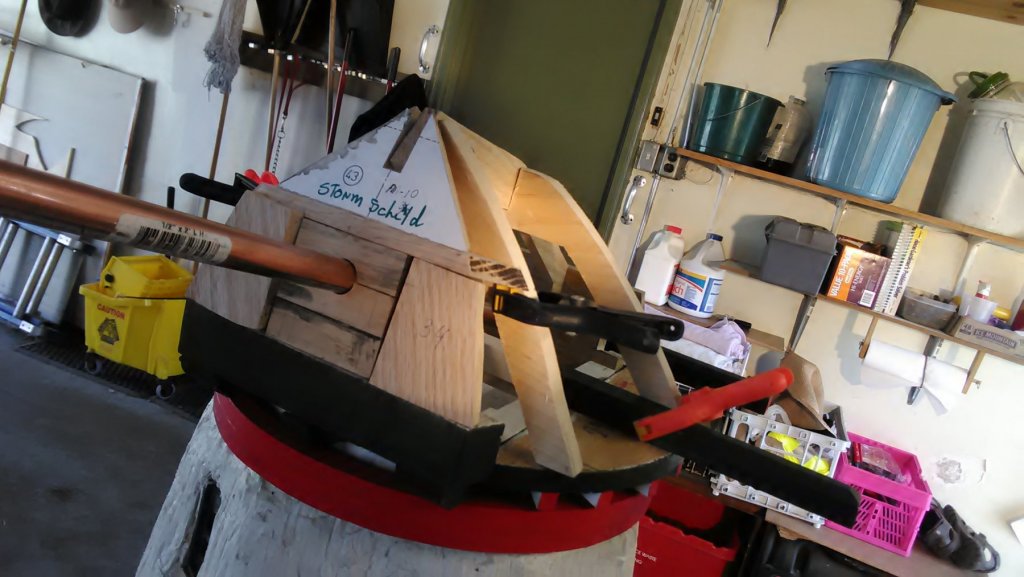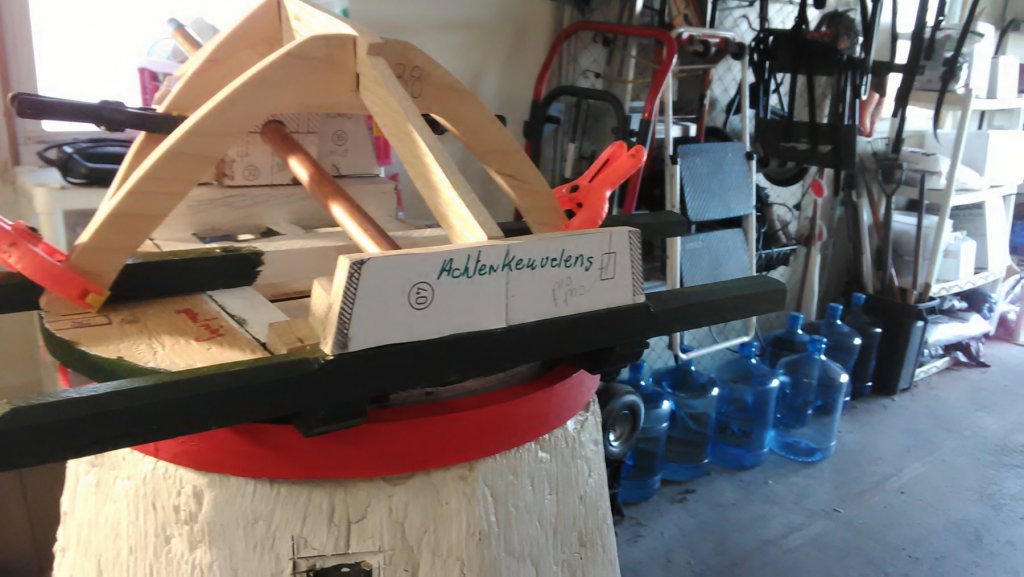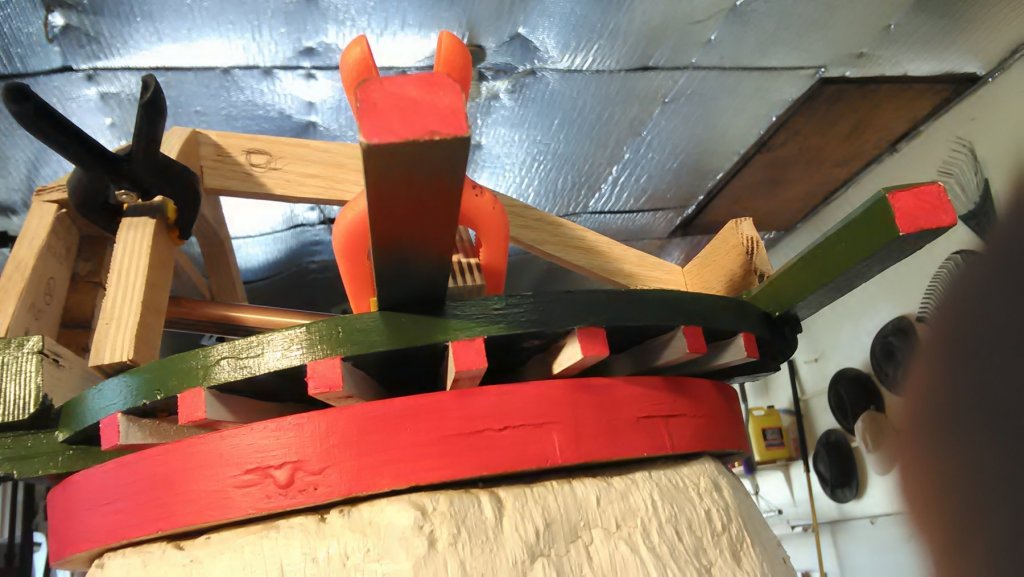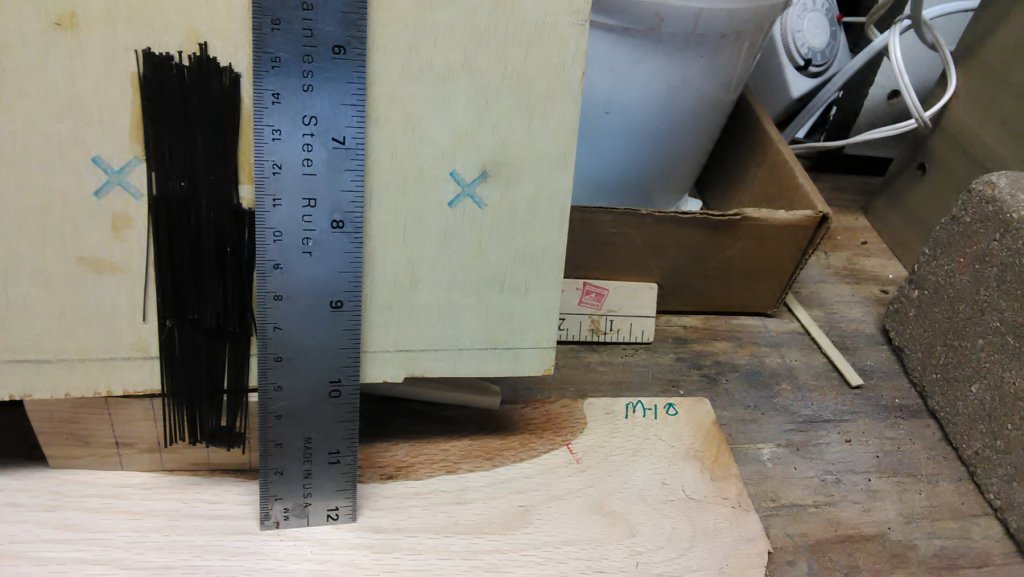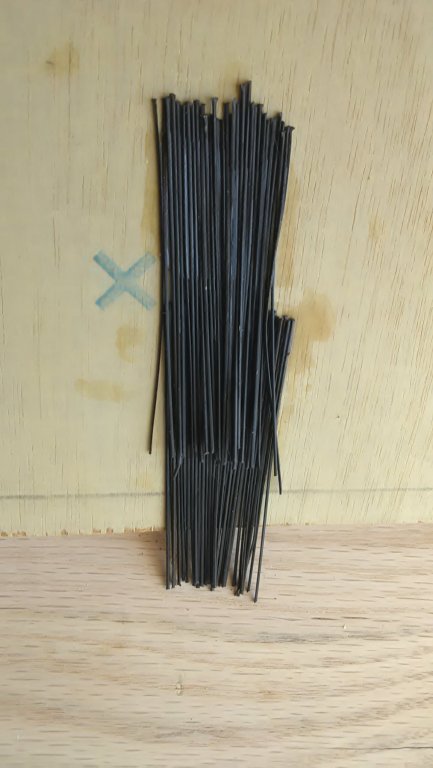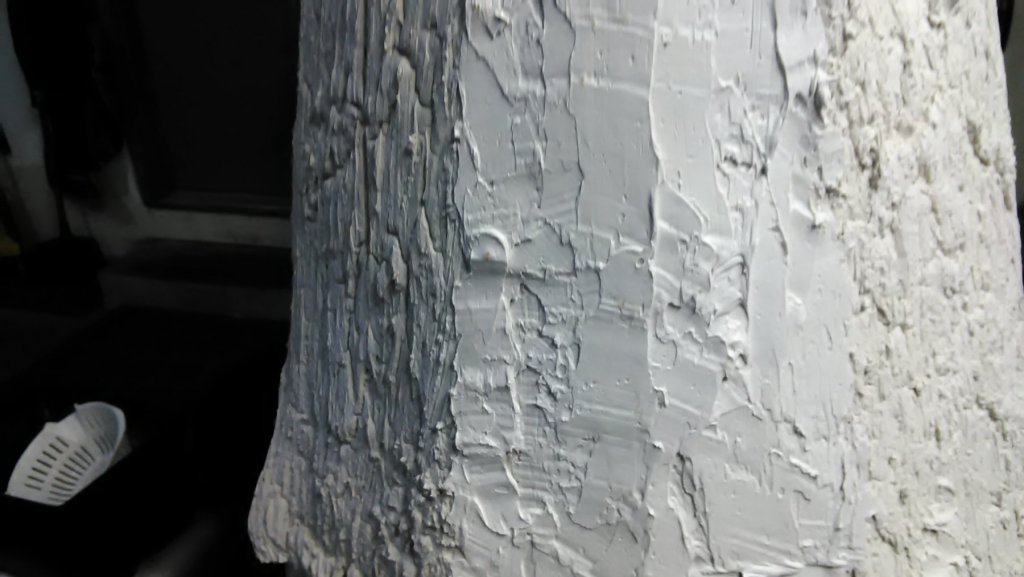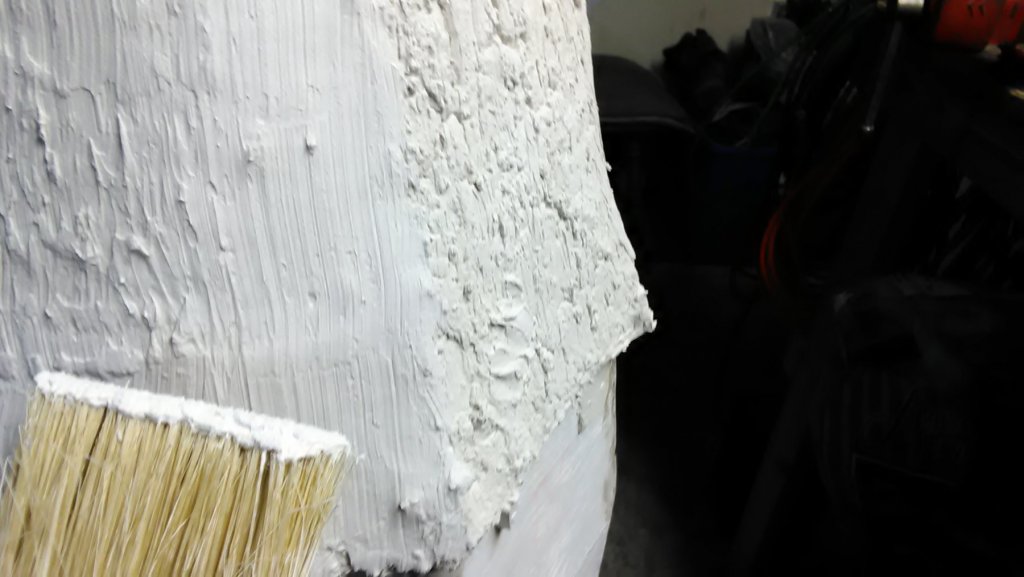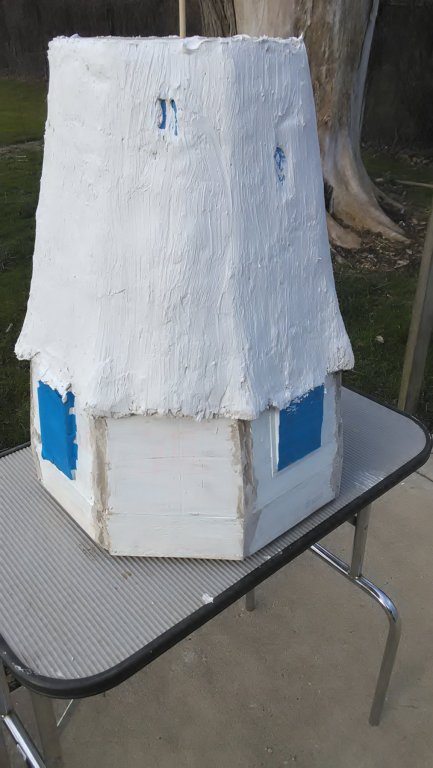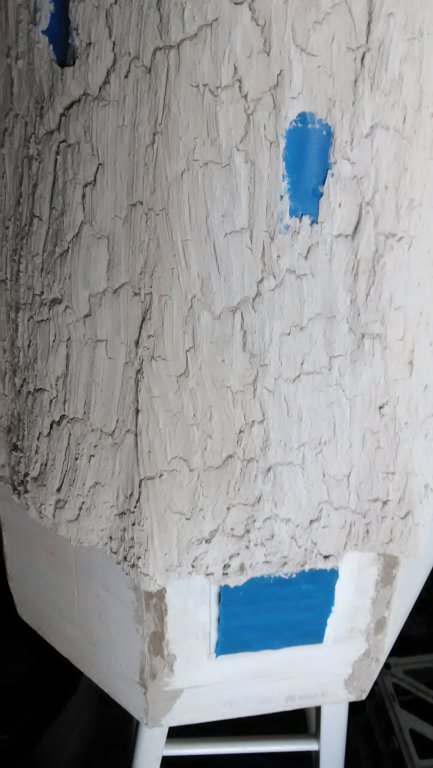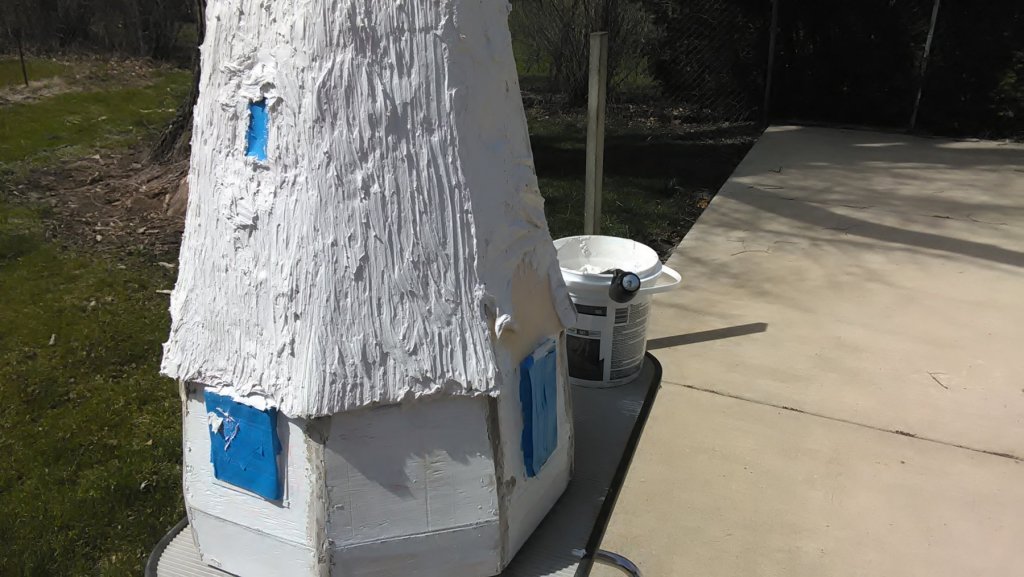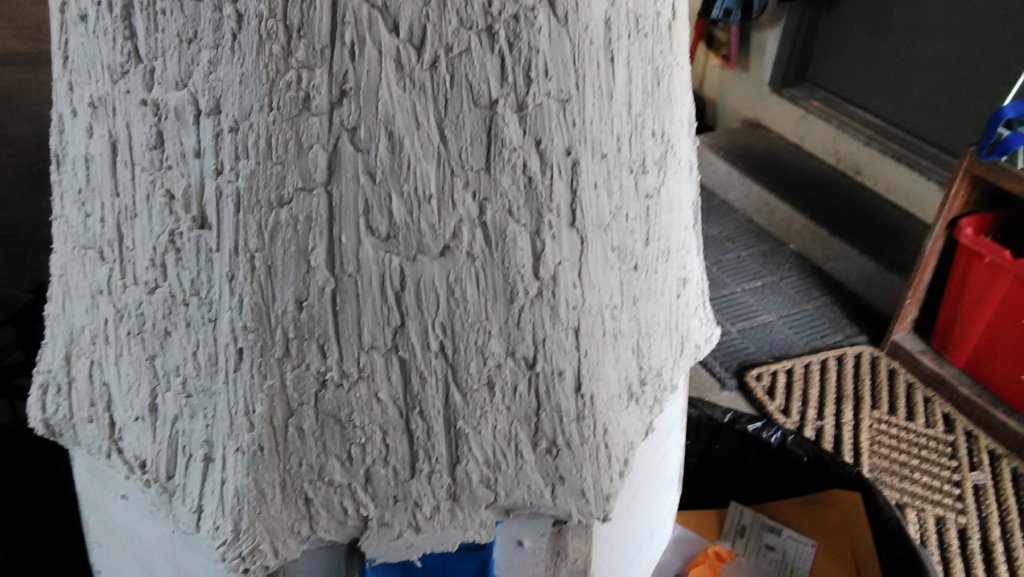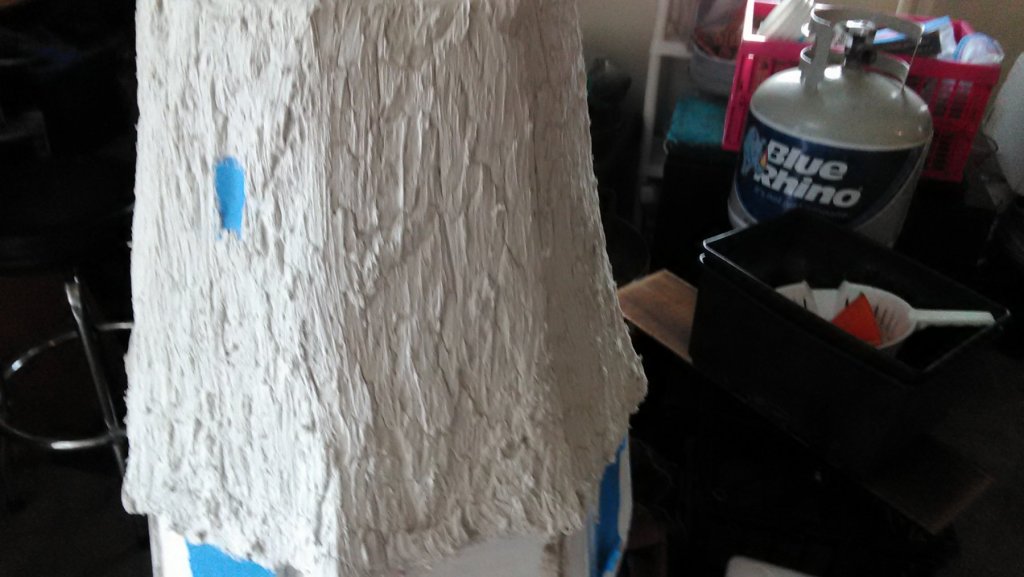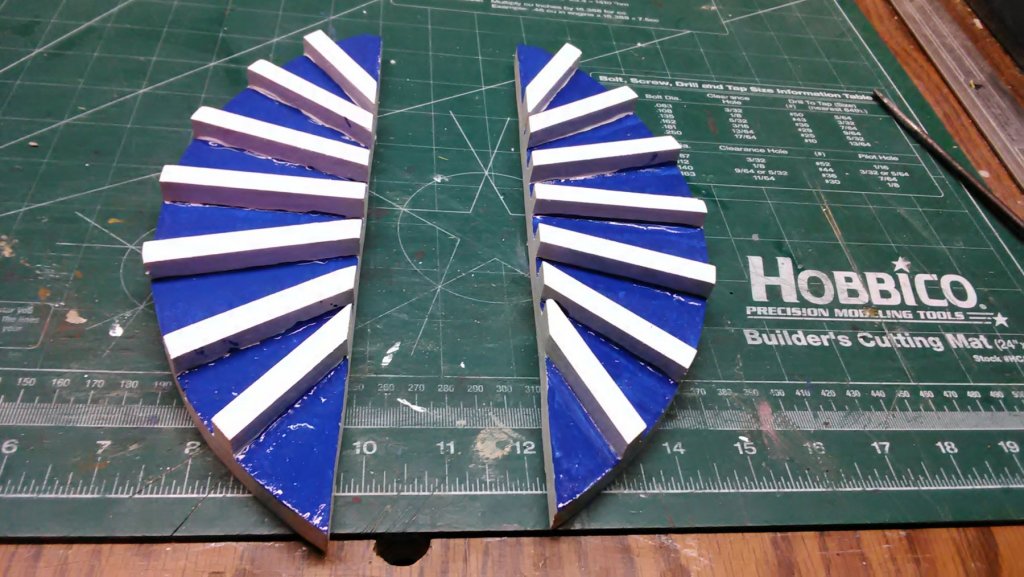-
Posts
1,735 -
Joined
-
Last visited
Content Type
Profiles
Forums
Gallery
Events
Everything posted by flying_dutchman2
-
Catching up on your ice yacht. It is coming along nicely. Love the details of this scale. Marcus
-
Back from Europe. I stayed in Heerhugowaard, the Provence Noord Holland. My friend, his and my wife drove around and checked out lots of different types of windmills. It will help with building my mill. Also went to Enkhuizen to a museum which has the largest collection of ships in a bottle (more than 1000) in the world. Amazing. Worked on the tooth wheel which is located on the axle and a piece of wood that falls between the teeth. This prevents the vanes from turning in both directions. Only one direction is allowed. The tooth wheel is from hardwood, drilled a hole through it and also the axle. Put a long nail in it. This prevents the tooth wheel from turning on its own on the axle. Completed the axle with 2 brass flanges. One for the back and one for the front of the cap. The axle fits exactly in the drilled pieces of wood. (hope the above makes sense). Still have to drill holes in the axle head for the vanes (still need to find someone with a drill press). Marcus
-
JMS. Glad you like the mill. www.penterbak.nl has plans and the one I am building as well. Unfortunately, the website and the plans are in Dutch. Don't know if you understand this. www.van-vliet.org On the left side, click on Dutch Windmill. Check the rest of this thread because I think cog posted another website. Marcus
-
Great work, Piet, especially your bow waves. The water looks very realistic. Something I need to learn how to do this as well. Marcus
- 378 replies
-
- java
- pacific crossroads
-
(and 2 more)
Tagged with:
-
The deck framing looks really good, Kees. It is starting to come together. Marcus
- 193 replies
-
- wilhelmina vii
- fishing
-
(and 1 more)
Tagged with:
-
In between vacations I did work a bit on the cap. Instructions indicate that once all the pieces are glued together to weave metal wire to the outside of the frames. Then take cloth and cover it completely with glue and drape over the wire, covering the wire completely. After it has dried smear the paste over it. I am guessing that with this method one does not get the curves of the cap. I am doing this differently. I've added some more vertical frames and once dry, glue planks horizontal over the frames creating a lattice. Then use pieces of veneer (which I have so much of) and cover the lattice. The sides will have a nice ball like curve. Marcus
-
Thanks Mark, I'll keep that glue in mind. Piet, coconut husk is too curvy My wife thought of something else, we have a bamboo fence used for one year and stored in a box. It has weathered to gray. It is a thin fence. Couple of layers of that and that could do the trick. She mentioned that we go to Michael's and Hobby Lobby and see what else there is. Raffia is something to look in as wekl. I haven't ripped out the fake thatch layer yet. I couldn't get myself to do that until I am sure there is no other way. Adding layers of the thin bamboo on top of the paste makes the whole thing look much fuller as well. I never knew this part would take so much trail and error to come up with something. Uncharted waters.😁 Marcus
-
This afternoon I am taking off the thick paste roofs, remove the nails and sand the nail holes. I got sheets of poplar that are 3mm and 4mm thick by 10" wide by 36" long (scrap wood from one of the guys at the Woodworker club). This will be for re-roofing. Last weekend I tried out various ways to imitate thatch and the broom bristle idea has to be rethought. With the waterproof glue it is a mess as the bristles keep moving. With CA it works beter but this would get expensive fast. I did the paste again but now the layer is 2mm thick and it is best to use a water moist 3" wide paint brush for strokes to imitate the thatch. No cracking when dried and looks good. Also painted a part of it and looks great. Won't do much this month as this weekend I have a wedding in Denver and from the 19th to the 28th I will be doing a castle tour both Irelands and the last weekend to Holland for my mother's 90th birthday. Marcus
-
'Tree barkish', that is a good one I checked to see if redoing is an option and it is. I have enough wood to redo everything but first I am going to to tear the sides off (the thatch part) and clean the bottom and top plate, and the styles. I want to save the foundation walls and the walls with the windows and doors. This area is not glued to the thatch area as the instructions tell you to keep it open for circulation. I took some bristles from an old black plastic bristle broom, i had in the greenhouse. Cut off 7cm in length. Spread them out so the bristles are side by side. Glued them on a piece of wood. Did the same to the next bunch of bristles and glued them above the first set. Overlapping 3.5cm. Looks pretty good. Question: How long should the bristles be? How much shall I overlap? Bristles can't be too short because when you overlap them they won't lay flat. Plastic holds better for outdoors as well and I can still paint it grayish. Would be ideal to put all of the bristles in long pieces of tape or cloth in strips and then wrap and glue it on the sides. Marcus
-
Carl, Glue the bristles on the paste? I am not taking the paste off. I am evening it out and it works, slow process. I will take bristles and glue on some wood, see what it looks like. I do like your idea. Should have done this instead of the paste. Definitely going to do that on my next mill (Yes, there is going to be another one). Marcus
-
Good observation, druxey. Unfortunately, there is still some cracking. 😞 So I took drastic measures. Got a hand saw with course teeth and started scrapping from top to bottom. As I said before, this paste is hard as stone, so it's a lot of work. The cracks are evening out and the teeth are creating ridges. Next mill I am building will not have this tile glue. I have to seriously research this until I find something better. Marcus
-
Cog, Backer and amateur, thanks for the links, suggestions and pictures. This gives me enough information on choosing a color. The 2 last pictures from amateur are great, besides the thatch it shows the back of the cap. My plans are line drawings and these show exactly what it looks like. Furthermore, in the second picture the walls are horizontal wood slats, I like that and to make the model look more interesting I am going to do something like that. This mill has the exact same colors as what is suggested for my model. Early this morning I filled in the cracks and added a thin layer of paste. Than with a regular paint brush I imitated the thatch, rinsing the brush after every 5-7 strokes in a pale of warm water. It did the trick. I like the looks of it. If I need to increase the stroke lines I can always do that when I paint the mill. Let it completely dry and slowly remove the hard paste from around the top windows. Will start painting the bottom walls. Been working on the cap as well (pictures soon). Marcus
-
Part 2 After a full day of drying the tile glue looks like, when clay soil has been baking in the sun for about 3 months with added ridges. It is also extremely hard. Some areas have cracks that are too obvious so these need to be filled in. Furthermore, a coarse wire brush makes no difference. Conclusion : fill in the cracks and add a thin layer here and there and try to imitate the thatch, again. My guess about the cracks is that the paste is put on while the mill stands up instead of laying down. Gravity pulled some areas apart. It is a nice learning experience. The tile glue that is recommended in the instructions which are in Dutch, is not the same as the tile glue I bought here in the US. From about 10 feet away, you can't really see the cracks. Question for the Dutch members. What color is the thatch? I know new thatch is straw colored and over time it becomes grayish. So what color shall I paint that area? Marcus
-
Started putting on the tile glue paste one side after another. Put on about 5-7mm and used a hard bristle brush going from down to up to imitate the thatch. It looked good after it was all done. Then over time once it starts to dry it all settled a bit flat, like frosting on a cake. It is still drying in the garage and I am assuming that tomorrow it has hardened completely. I will take a coarse wire brush and add more ridges to the sides. I did notice in one small area which is already dry the material is is hard and does not come off when scratching with a finger nail. Tomorrow part 2 Also painted the underside of 2 pieces dark blue. In Dutch it is called t'hemeltje (little heaven). Marcus
About us
Modelshipworld - Advancing Ship Modeling through Research
SSL Secured
Your security is important for us so this Website is SSL-Secured
NRG Mailing Address
Nautical Research Guild
237 South Lincoln Street
Westmont IL, 60559-1917
Model Ship World ® and the MSW logo are Registered Trademarks, and belong to the Nautical Research Guild (United States Patent and Trademark Office: No. 6,929,264 & No. 6,929,274, registered Dec. 20, 2022)
Helpful Links
About the NRG
If you enjoy building ship models that are historically accurate as well as beautiful, then The Nautical Research Guild (NRG) is just right for you.
The Guild is a non-profit educational organization whose mission is to “Advance Ship Modeling Through Research”. We provide support to our members in their efforts to raise the quality of their model ships.
The Nautical Research Guild has published our world-renowned quarterly magazine, The Nautical Research Journal, since 1955. The pages of the Journal are full of articles by accomplished ship modelers who show you how they create those exquisite details on their models, and by maritime historians who show you the correct details to build. The Journal is available in both print and digital editions. Go to the NRG web site (www.thenrg.org) to download a complimentary digital copy of the Journal. The NRG also publishes plan sets, books and compilations of back issues of the Journal and the former Ships in Scale and Model Ship Builder magazines.




